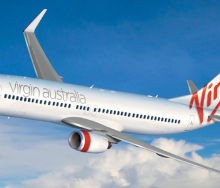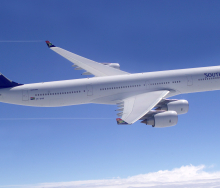Regional airline carriers do not expect much growth in Africa’s aviation market in 2024, and see this year as one of reconsolidation.
“Economists are pretty lukewarm on economic growth predictions for 2024. They seem to expect GDP growth to be around 1,2%, so that’s not really going to open up a huge growth opportunity. As such, we see 2024 as being a bit of a year of reconsolidation,” said Kirby Gordon, Chief Marketing Officer of FlySafair.
He told Travel News: “We don’t expect much growth, but with costs rising we can see that everyone is really going to have to sharpen their pencils from an operational perspective to ensure that costs are minimised through efficiency so that we can survive at the prevailing yields we are set to achieve.”
Gordon did, however, state that while South Africa’s growth projections were pretty tepid, spots in Africa were doing really well.
“Our hope is that this translates well into growth for the African market at large and it’ll be great to see African carriers grab at opportunities that arise responsibly and sustainably to ensure that the opportunities translate to increased revenue.”
Rodger Foster, CEO and MD of Airlink, said African airlines still faced major barriers.
“We face some headwinds in terms of rising costs reflecting a stagnant economy, a weakening currency, inflation, geopolitical tensions, policy uncertainties in a number of countries as well as a shortage of foreign reserves in several African countries, which make trading conditions quite challenging for airlines and for multinationals in a range of other industries.”
African traffic expected to reach 98 million
Since November last year, traffic carried by African airlines exceeded 2019 levels, according to the African Airlines Association (AFRAA).
In January 2024, African airlines revenue passenger kilometres (RPKs) were 2,06% above the level of the same month in 2019, while available seat kilometres (ASKs) were 7,1% above.
RPK measures the actual demand for an airline's services by calculating the total distance travelled by revenue-paying passengers. It helps airlines understand which routes and flights are popular among passengers. ASK represents an airline's available passenger-carrying capacity.
According AFRAA estimates, African airlines will carry around 98 million passengers in 2024.
“At some major African airports (Johannesburg, Nairobi, Addis Ababa, Lusaka, Cairo, Casablanca, Abidjan and Lagos), intra-Africa connectivity reached or exceeded pre-COVID levels since December 2022,” AFRAA said in its January 2024 performance update.
“2023 saw an increase in airline revenues and the narrowing of revenue gap compared with 2022. The full year 2023 revenue shortfall of African airlines was US$1 billion (R19 billion), compared with 2019 full year.”
According to the most recent Iata data, Africa represents about 2% of the total global passenger and air cargo market.
Profitability
Gordon said FlySafair expected a pretty stable year in terms of growth and operations.
“We aim for a reasonable margin on our operations with a view that if we want to make more money we need to serve the market with more capacity. The low-cost model has always been a high-volume, low-margin approach. Our shareholders are satisfied with the value we’ve built and understand the projections that we’ve put forward for the year,” he said.
Foster said Airlink was financially robust and a well-capitalised privately owned entity, and that the airline would continue to pursue business “that makes sense and is sustainable in every sense of the word”.
Progress made since COVID
The pandemic and SAA’s business rescue enabled Airlink to reinvent itself as a wholly independent airline.
It terminated the franchise with SAA, introduced an entirely new network, including domestic trunk routes and some regional routes that it had previously not served, rebranded and began operating and ticketing using its 4Z flight and ticketing codes.
Over the past four years, Airlink has built a network that extends to over 45 destinations in 15 countries throughout southern and East Africa, Madagascar and St Helena.
In addition to its main base at Johannesburg, Airlink had also established a busy hub at Cape Town and is developing connectivity from Durban. A year ago, Airlink also rolled-out its Skybucks loyalty rewards programme.
Gordon said that, while the pandemic was a very challenging period for FlySafair, it chose to try and look for the opportunities that it would bring.
“We were able to emerge from the pandemic significantly stronger than before. In 2019 just before the pandemic, we were experiencing some moderate growth. We were only flying domestically, although we had our sights set on a regional expansion plan,” he said.
In December 2019, FlySafair operated 2 558 flights on 11 routes, which was a record for the airline at the time.
“When March 2020 hit, that triggered a massive pause on everything. As demand started to recover and various opportunities arose we managed to shore together investment, expand the fleet and bring on new staff to expand operations,” Gordon added.
In December 2023, FlySafair operated 5 471 flights across 21 routes, six of which cross South African borders.
“While this growth was an absolute blessing, we do foresee a slowing down on that momentum with the market starting to reach an equilibrium again,” Gordon concluded.














